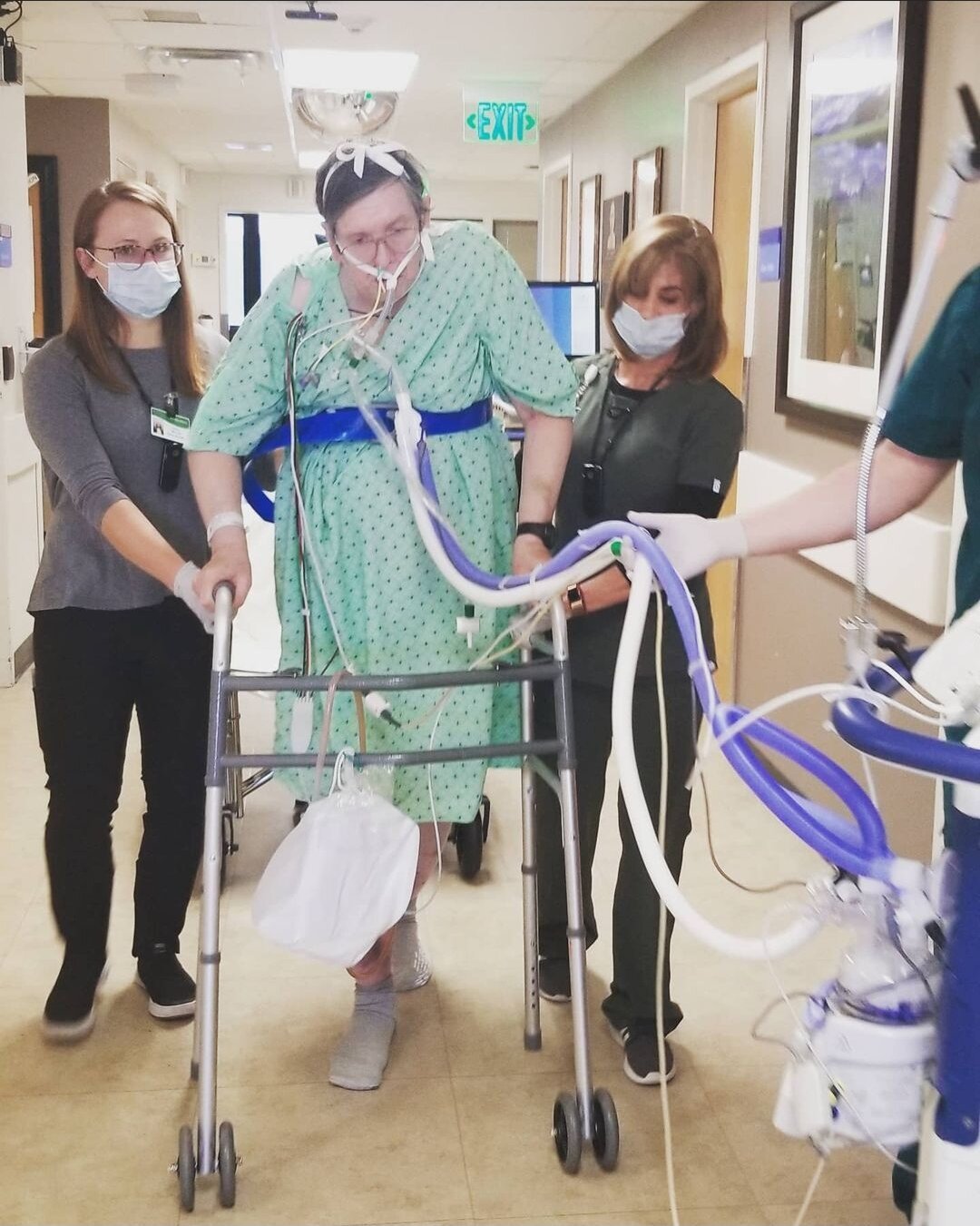Mobility Minute: Kali Dayton on walking home from the ICU
Today we speak with Kali Dayton (AGACNP-BC, DNP).
Kali is a nurse practitioner from Utah with experience both as a traveling nurse and in her hospital's 'Awake and Walking' ICU. She noticed some major differences with how patient sedation was handled depending on the hospital system and this revelation has led her to start a podcast of her own called Walking Home from the ICU.
Her goal is to discover the true impacts of patient sedation and immobility in the ICU and how often patients are unnecessarily administered drugs that lead to more harm than good. On her show, she interviews survivors dealing with post-ICU PTSD and clinicians who understand that even the most critical patient needs early and frequent mobility.
“If someone comes in with septic shock, you’re not going to say, ‘I don’t really feel like giving them an antibiotic today. It’s probably not a good day for that. We’ll just skip it today.’ We see mobility as vital as an antibiotic for septic shock.”
Listen to the full podcast here.
Note: Podcast transcript below is a condensed version of the conversation generated using a combination of speech recognition software and human transcribers, and may contain errors. Please check the corresponding audio before quoting in print.
Tell us a little about yourself and why you started your podcast.
I’m Kali Dayton. I'm an ICU nurse practitioner, and I started my career as a nurse in an ‘Awake and Walking’ medical-surgical ICU in Utah where we did not sedate people automatically once they were intubated. So everyone was essentially awake and almost always walking on the ventilator. That was my introduction to critical care, and I didn’t know anything else until I became a travel nurse.
Suddenly, I was immersed into this culture of automatic deep sedation and immobility, and I didn’t totally understand why. I would ask providers and nurses, “Hey, can I get my patient up?” Only because I was used to talking to patients, moving them, having them be human in the bed, and out of the bed.
They looked at me like I was crazy!
After traveling for years and seeing scenarios like this all across the country, I just kept feeling like we needed to tell people, and one day it just came to me, “Start a podcast!”
Patient walking in the ‘Awake and Walking’ ICU
I’m sure seeing firsthand the benefits of a system like you were a part of (in Utah) and then going into a new one where that wasn’t the case was eye-opening. Are ‘Awake and Walking’ ICUs a common thing?
I think there are varying degrees of compliance with this approach. The A-F Bundle is a big moment that is coming and it’s wonderful. It has us given patients vacations from sedation and seeing if they can tolerate it. The ‘Awake and Walking’ ICU never starts sedation so you don’t have to give them a break to see if they can breathe on their own because you’re always assessing that.
Nonetheless, the critical care community is becoming more and more aware of the reality of sedation and immobility and I think they’re trying to develop protocols to lighten things up.
The ‘Awake and Walking’ ICU in Salt Lake City is probably the only ICU in the whole world that has standardized keeping patients awake and walking on the ventilator.
That’s crazy. The general understanding seems to be that an ICU patient is supposed to be sedated, but from your experience, you see the power of getting them off sedation and empowering them to be mobile. What do you think it means to make mobility a priority in the ICU because obviously, the milestones for a critically ill patient are a lot different than the rest of the floors?
We see mobility as a treatment. It’s essential for survival. So, when they’re critically ill, why would we not pull out all the stops to make sure they survive?
If someone comes in with septic shock, you’re not going to say, “I don’t really feel like giving them an antibiotic today. It’s probably not a good day for that. We’ll just skip it today.”
We see mobility as vital as an antibiotic for septic shock.
And it’s dose-dependent as well so their tolerance is going to change. But if someone walks into the ICU, they should be able to walk out of the ICU.
How are you currently documenting mobility victories in the ICU and how do you communicate mobility amongst the staff?
Physical therapy is recording in their notes, and nurses present during that activity usually communicate it to the next shift. We also talk about it during rounds. As a nurse practitioner, I document it in my notes too.
It’s not really standardized in doctor or nurse practitioner notes, but it definitely is available and present in physical therapy’s notes as well as our interpersonal communications.
Sometimes it’s helpful for a patient to know how many feet they’ve walked so they can stick it to themselves. Or sometimes they’ll say, “I can’t do that.” Then we can say, “Hey you walked 50 feet yesterday, let’s at least hit that today.”
I think it’s important to know exactly how many feet people are walking.
What else do you want people to know?
I mean you think back to when postpartum women used to be on bed rest for weeks after delivering babies. They would develop pneumonia and blood clots. Now we look back at that and we’re like, “That’s ridiculous, why was that ever a thing?” Someday we’re going to look back at immobility in the ICU the same way. So especially the other floors outside the ICU need the same perspective if we’re going to tune people up and send them out, we need to keep them progressing after.
ABOUT THE AUTHOR
DREW MARTIN
Drew works as marketing manager and takes care of digital and content marketing efforts for Recovery Force Health. He enjoys learning about and discussing newer medical technologies and adopting them into everyday marketing practices.




